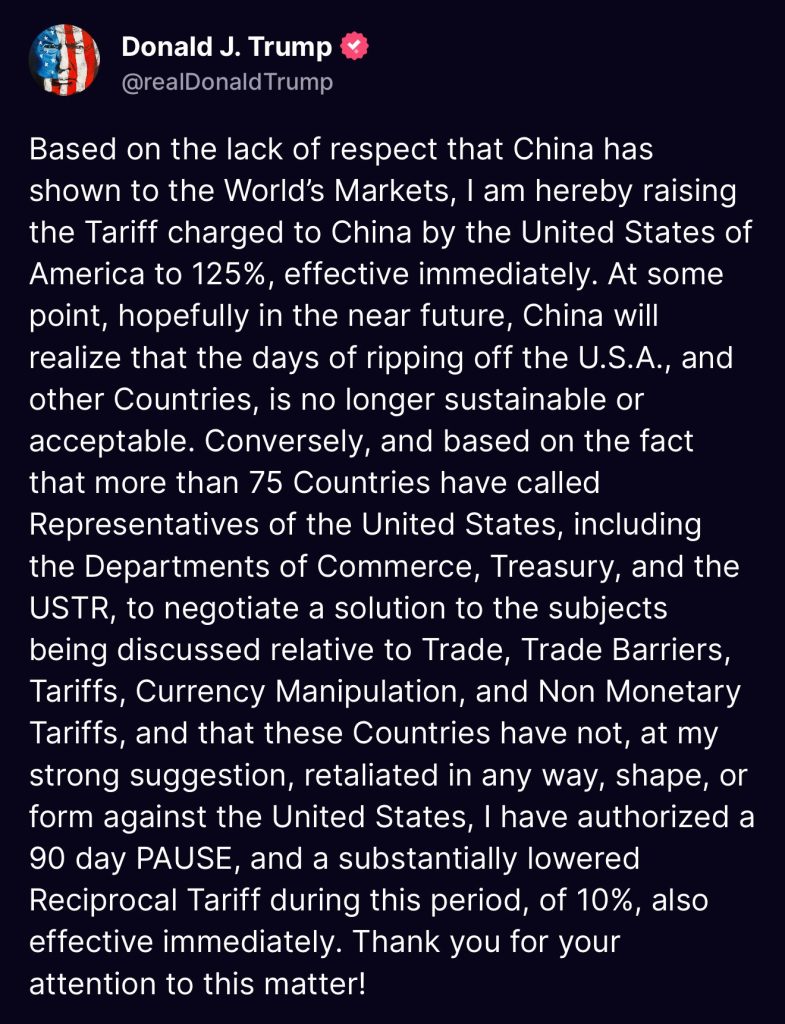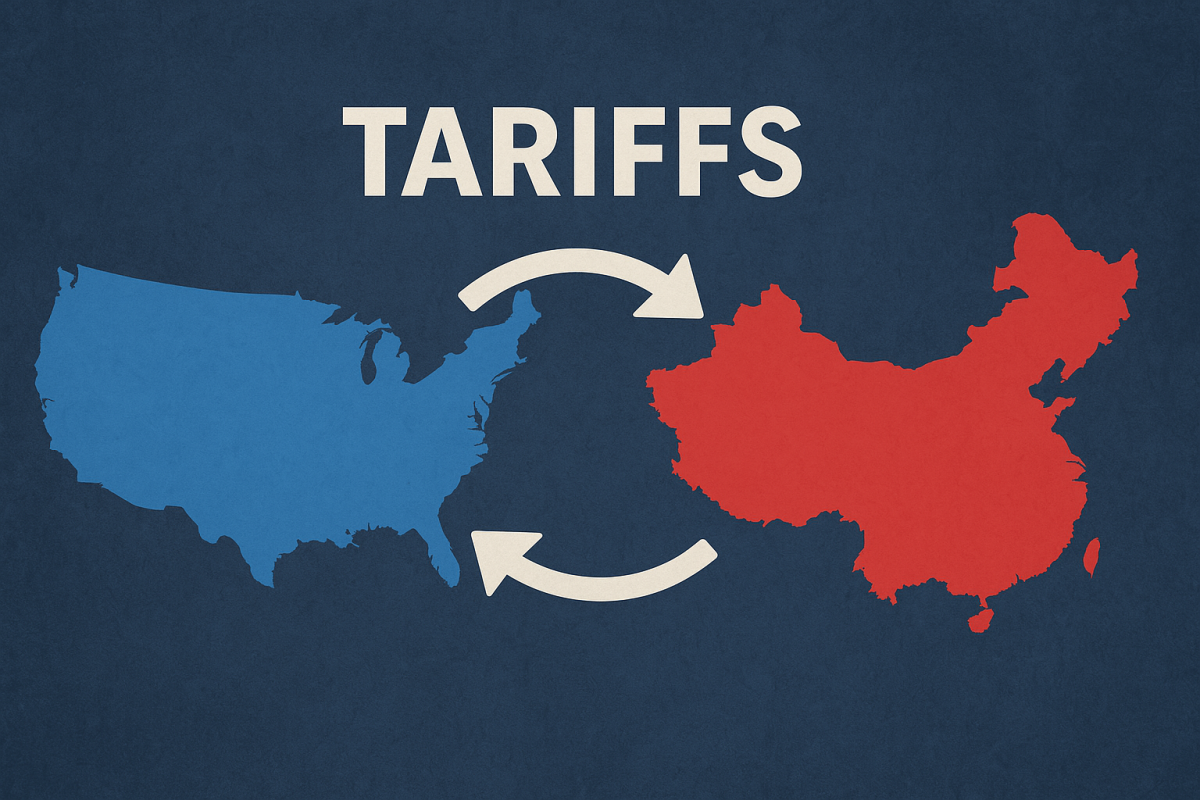Former President Donald Trump has announced a new 125% tariff on all Chinese imports, effective immediately. This follows a previous 104% rate and represents a sharp escalation in the U.S.-China trade policy. Trump also authorized a 90-day pause with a reduced 10% reciprocal tariff during this window for other trading nations cooperating diplomatically.
This development answers the trending question: “What does 125% tariff mean?” and is likely to have an even greater impact on consumer prices, manufacturing, and global trade tensions.

If you’re asking “what does 125% tariff mean”, you’re not alone — it’s one of the most searched phrases right now. In short, it means that importers are now required to pay 125% of the product’s value in taxes when bringing goods from China into the U.S. A $100 product would now cost $225 before retail markup, placing significant pressure on small businesses and consumers.
📊 Updated U.S. Tariff Rates on Chinese Imports – April 2025
| Product Category | Previous Tariff Rate | New Tariff Rate |
|---|---|---|
| General Imports | 104% | 125% |
| Electronics | 104% | 125% |
| Textiles | 104% | 125% |
| Machinery | 104% | 125% |
💡 What Does a 125% Tariff Mean for the U.S. Economy?
- Sharp Rise in Consumer Prices: Most imported products from China will more than double in price, affecting electronics, clothing, and appliances.
- More Strain on Small Businesses: Those dependent on Chinese suppliers may struggle with profit margins or need to raise prices drastically.
- Incentive for Domestic Manufacturing: U.S.-based production may become more attractive, though startup and equipment costs remain a barrier.
- Growth in Resale & Recycling Markets: As prices rise, consumers may look to buy used goods, resell, or delay replacing items — potentially reducing waste.
📘 Tariff Basics: A Quick Overview
- What Are Tariffs? Government-imposed taxes on imports, usually to protect domestic industries or penalize unfair trade practices.
- How Do They Work? Importers pay the tariff when goods enter the country, often passing costs to consumers.
- Who Is Affected? Everyone in the supply chain — from manufacturers and retailers to end consumers — especially when tariffs spike like this.
